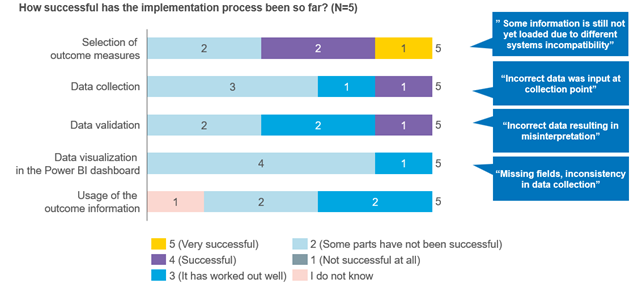To be presented by the teams of CIMAS and Nordic Health Group (NHG)
ICHOM Conference 2023 speaking session: Day 2, October 11, 13:30 CET
Challenge:
CIMAS, Zimbabwe’s leading medical aid society, needed a way to measure outcomes for both diabetes and hypertension within their clinics. The incidence of diabetes and hypertension is increasing rapidly in Zimbabwe, and value-based healthcare and outcome measurement within these two therapeutic areas is the key element to ensure clinical efficacy, patient focus, treatment quality, and cost management. CIMAS had already made significant improvements in diabetes and hypertension care pathways but wanted to further raise visibility regarding actual outcomes and costs of the treatment. In addition, through monitoring outcomes and cost they are aiming for both clinic level benchmarking and continuous improvement – and in the future, international benchmarking as well.
Solution:
CIMAS chose to implement ICHOM outcome measures with the support of Nordic Healthcare Group (NHG), an ICHOM implementation partner based in the Nordics and operating globally. Together, NHG and CIMAS first defined the outcome measures, data collection methods, and data architecture to determine which parameters were available, what data needs to be collected, and how this would be done. After this, data visualization for clinical and management decision-making was determined, and plans on how to use the data to enable continuous improvement were set. The implementation of the ICHOM diabetes set was the primary focus.
Result:
CIMAS has been able to solve multiple challenges during the implementation, starting from the fragmented nature of digital systems and data linkage issues, to strengthening collaboration with external vendors. During the spring of 2023, their data team worked on identifying inaccurate and missing data, with their clinical team participating in the data validation process. CIMAS was also able to collect PROMs (patient-reported outcomes) from their patients, with a response rate of over 80%.
The diabetes visualization dashboard has been validated and is now in use. Benchmarking of outcomes and costs is being done at the patient, clinician, hospital, and regional levels. The ambition is to move towards national and international benchmarking in the near future. The implementation of outcome sets is providing information to CIMAS which enables improvements in their management system, patient interactions, and research.
Conclusion and next steps:
CIMAS will continue their value-based healthcare journey, with the implementation of new ICHOM sets planned to start later this year. The entire organization finds outcome measurement the right way forward and they are committed to strive for better health outcomes for their patients. As a forerunner, CIMAS has the opportunity to influence national development of value-based healthcare in Zimbabwe and aims to publish their progress and results in scientific journals.
Further, CIMAS is collaborating with technical officers in the Non-Communicable Diseases Unit in the Zimbabwe WHO country office. They are following the CIMAS development process closely, as they consider the progress of implementing value-based healthcare in Africa important.
Survey results in CIMAS after the Diabetes-set implementation:

